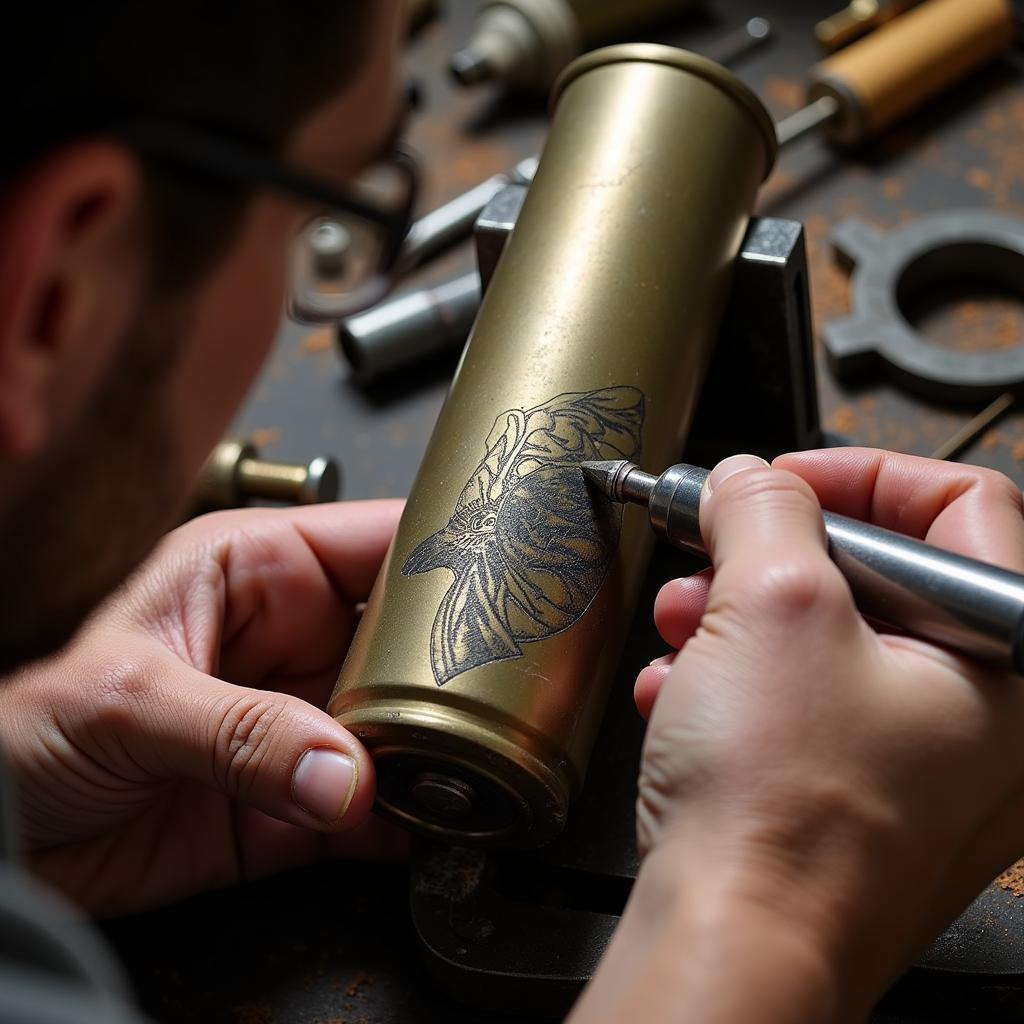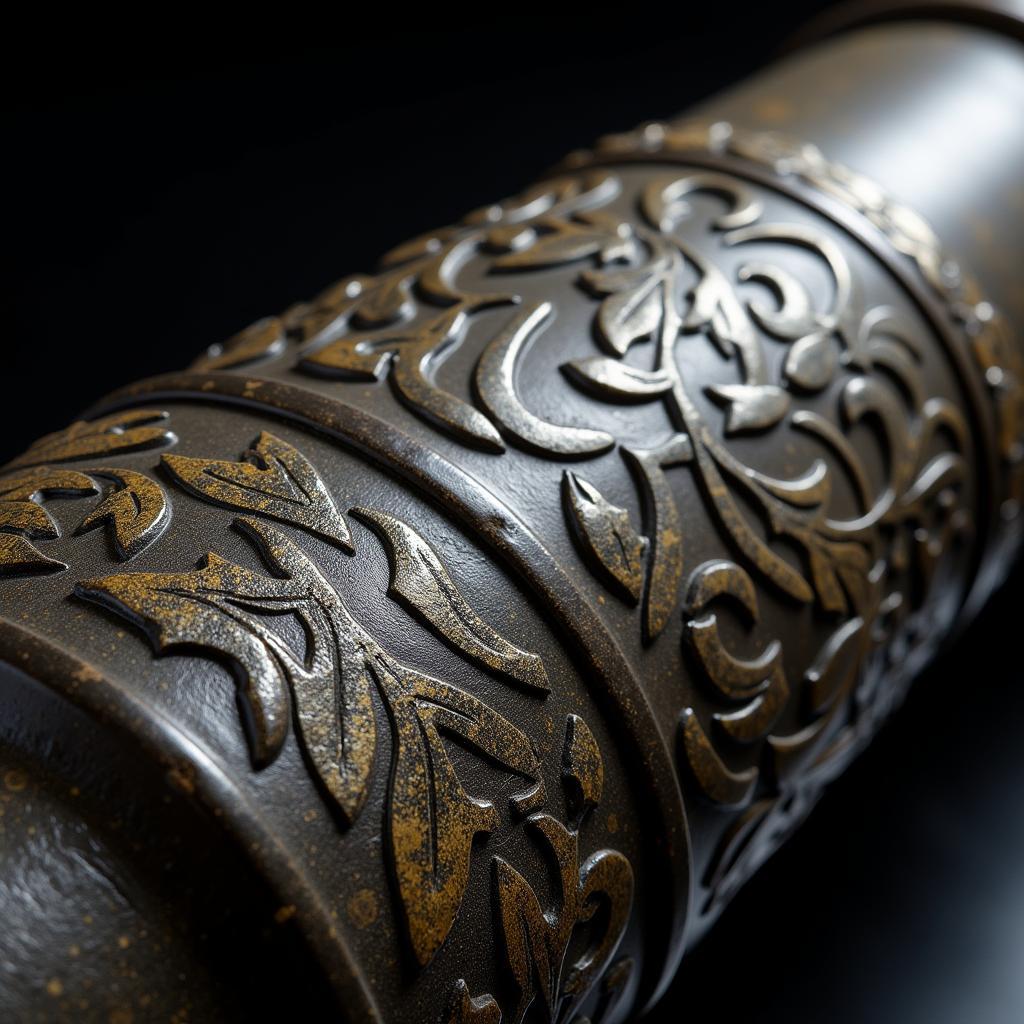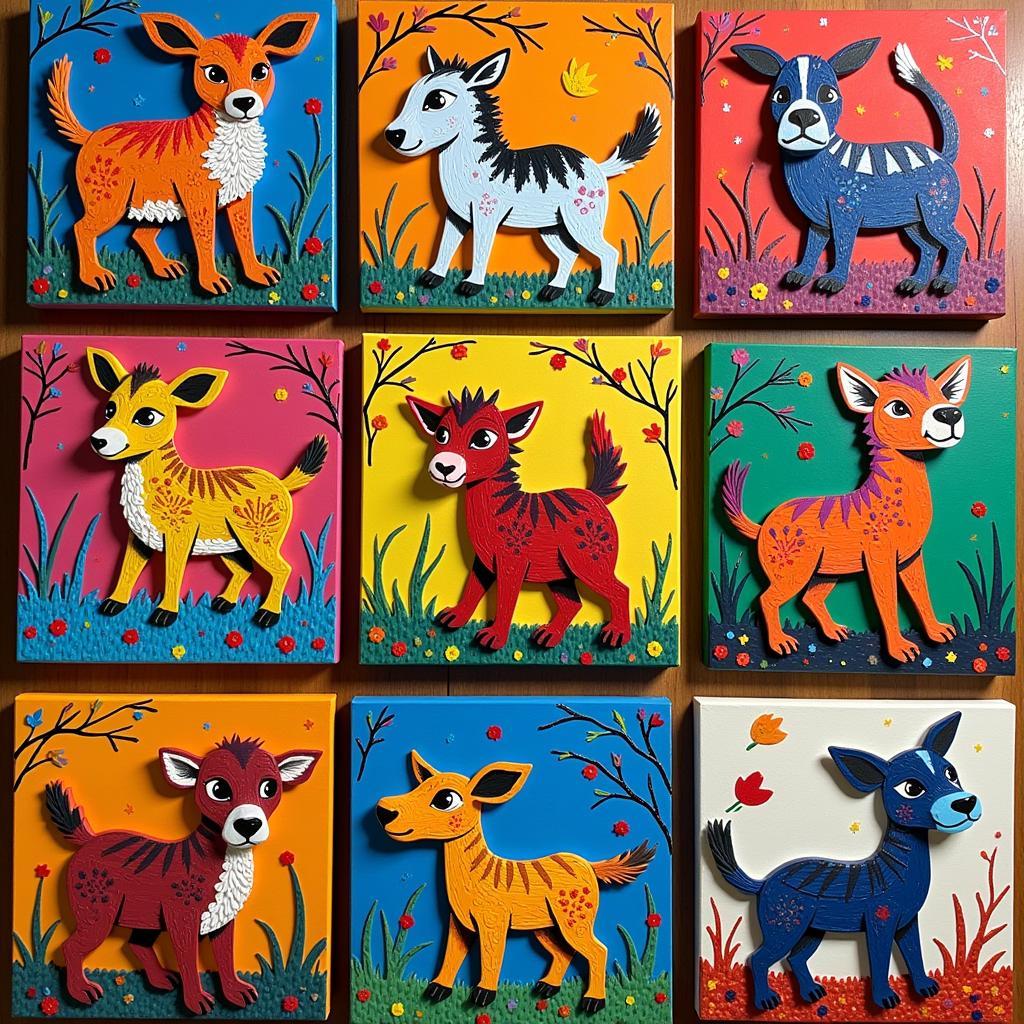Artillery Shell Art: Transforming Remnants of War into Powerful Expressions of Peace
Artillery Shell Art represents a unique intersection of history, craftsmanship, and artistic expression. These powerful pieces transform remnants of war – spent artillery shells – into objects of beauty, reflection, and sometimes, even functionality. From intricately etched designs to repurposed lamps and furniture, artillery shell art offers a captivating glimpse into the human capacity to find creativity and meaning in the aftermath of destruction. Let’s explore this fascinating art form, delving into its history, techniques, and the profound stories it tells.
After the devastating wars of the 20th century, soldiers often found solace and creative outlet in transforming the debris of battle into personal mementos. This resourcefulness gave birth to trench art, encompassing a wide range of crafts made from discarded war materials. Artillery shell casings, due to their durability and unique shape, became a popular medium. While some pieces remained simple souvenirs, others evolved into intricate works of art, reflecting the skill and emotional journey of their creators. Trench art offers a tangible connection to the past, a testament to human resilience in the face of adversity. Perhaps you’re interested in a unique piece like a trench art lamp.
The History and Evolution of Artillery Shell Art
The practice of creating art from spent artillery shells can be traced back to World War I. Soldiers facing long periods of inactivity in the trenches sought ways to occupy their time and process their experiences. Initially, the creations were simple, often involving basic engravings of names, dates, or unit insignia. However, as the war progressed, the artistry became more sophisticated, incorporating intricate carvings, inlaid designs, and even the repurposing of shells into functional objects. This evolution continued through subsequent conflicts, with each generation of artists adding their own unique styles and techniques to the tradition.
Techniques and Materials Used in Creating Artillery Shell Art
Creating artillery shell art requires a combination of skill, patience, and specialized tools. The process often begins with carefully cleaning and preparing the shell casing. Then, depending on the desired outcome, various techniques can be employed. Engraving involves using sharp tools to carve designs into the metal surface. Inlaying adds decorative elements by embedding materials like silver, copper, or wood into the shell. Some artists even transform shells into functional objects, creating lamps, vases, or even furniture.
 Artillery Shell Engraving Process
Artillery Shell Engraving Process
Some remarkable pieces demonstrate the versatility of this medium. Check out this incredible trench art airplane for inspiration.
The Stories Behind the Art: Symbolism and Personal Expression
Each piece of artillery shell art tells a story. For the soldiers who created them, these objects served as a way to cope with the trauma of war, express their creativity, and create lasting memories of their experiences. The designs often incorporate symbolic imagery, reflecting themes of peace, remembrance, or resilience. Today, these pieces continue to resonate with viewers, offering a powerful reminder of the human cost of conflict and the enduring power of art to heal and inspire.
Collecting and Appreciating Artillery Shell Art
For collectors and enthusiasts, artillery shell art offers a unique and compelling connection to history. Each piece carries with it the weight of its origins, serving as a tangible reminder of the sacrifices made by those who served in wartime. When considering collecting artillery shell art, it’s important to research the piece’s history and provenance to understand its significance and authenticity. Whether you’re drawn to the intricate craftsmanship, the historical context, or the powerful symbolism, artillery shell art offers a rich and rewarding area of exploration.
 Artillery Shell Lamp in a Living Room
Artillery Shell Lamp in a Living Room
Have you ever thought about incorporating such a unique piece into your home décor? A trench art AK furniture piece might surprise you!
Artillery Shell Art: A Legacy of Creativity and Resilience
Artillery shell art is more than just a craft; it’s a testament to the human spirit’s ability to find beauty and meaning in even the darkest of circumstances. From the trenches of World War I to the present day, these powerful pieces continue to captivate and inspire, offering a unique perspective on the history of conflict and the enduring power of art. By transforming instruments of destruction into objects of beauty, artillery shell artists have created a lasting legacy of creativity, resilience, and hope.
 Close-Up of Intricate Artillery Shell Carvings
Close-Up of Intricate Artillery Shell Carvings
Conclusion
Artillery shell art stands as a powerful symbol of transformation, turning remnants of war into poignant works of art. From its humble beginnings in the trenches to the intricate pieces we see today, this art form continues to fascinate and inspire. By understanding the history, techniques, and symbolism behind these creations, we gain a deeper appreciation for the resilience and creativity of the human spirit.
FAQ
-
What is artillery shell art?
Artillery shell art involves transforming spent artillery shells into decorative or functional objects. -
When did this art form originate?
The practice dates back to World War I, with soldiers crafting art from discarded war materials in the trenches. -
What techniques are used in creating artillery shell art?
Common techniques include engraving, inlaying, and repurposing shells into lamps, vases, or furniture. -
What is the significance of artillery shell art?
It symbolizes resilience, creativity, and the transformation of destruction into beauty. It also serves as a tangible link to history and the human cost of war. -
Where can I find artillery shell art?
Antique shops, military memorabilia stores, and online marketplaces are potential sources for these unique pieces. -
How can I tell if a piece is authentic?
Researching the piece’s provenance and consulting with experts can help verify its authenticity. -
What should I consider when collecting artillery shell art?
Consider the piece’s historical context, craftsmanship, and condition when evaluating its value and significance.
For any assistance, please contact us at Phone: 02462573573, Email: danteum@gmail.com or visit us at Savico Megamall, 7-9 Đ. Nguyễn Văn Linh, Gia Thụy, Long Biên, Hà Nội 10000, Việt Nam. We have a 24/7 customer service team.


